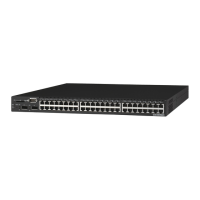Appendix E: Configuring the BIOS Settings for SoL
SoL enables the console output of a managed system to be redirected over an IPMI session over
IP. This allows remote users to have text-based access to the BIOS, utilities, operating systems
such as Command Line interfaces and Linux console and management services such as
Microsoft's serial-based EMS. At the same time, SoL provides access to IPMI platform
management functions.
To set the BIOS:
1. Enter the BIOS setting.
2. Select the Console Redirection option.
3. Point to Console Redirection and press Enter.
4. Change the Redirection After Boot value from Disabled to Enabled.
5. Save the settings to BIOS.
To set the BIOS with Windows 2003:
If your operating system is Windows 2003 Enterprise, enter the following command in the
command line:
bootcfg /ems ON /port com1 /baud 19200 /id 1
To set the BIOS with Redhat Enterprise Linux 3.0:
1. Modify the /etc/grub.conf
#serial -unit=0 -speed=19200
#terminal -timeout=10 serial console
default=10
timeout=10
#splashimage …
Title Red Hat Linux …
root (hd0,2)
kernel /vmlinuz-2.4.9-e.12smp ro root=/dev/hda6
console=tty1 console=ttyS0,19200
initrd-2.4.18-4smp.img
2. Modify the /etc/inittab by adding the following text to the end:
7:2345:respawn:/sbin/agetty -h ttyS0 19200 vt100
3. Modify the /etc/securetty by adding the following text:
ttyS1
204 MergePoint® SP Manager Installer/User Guide

